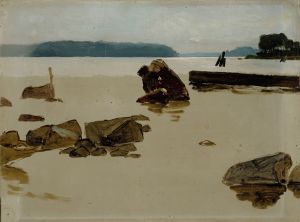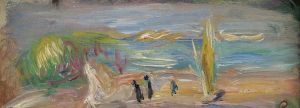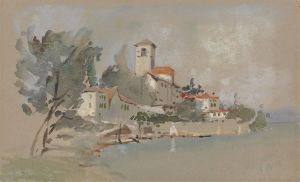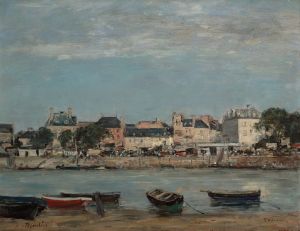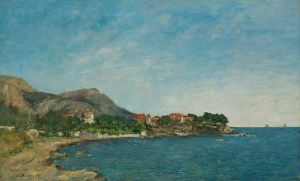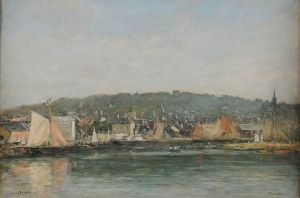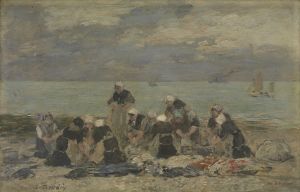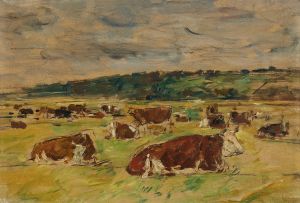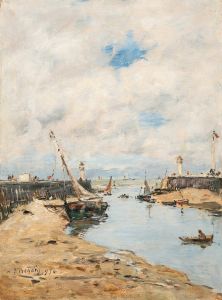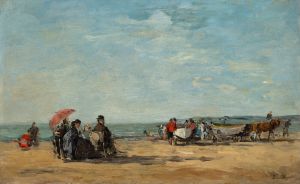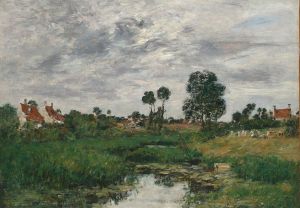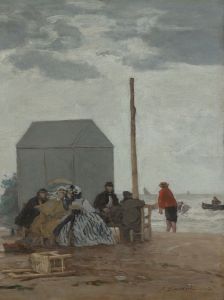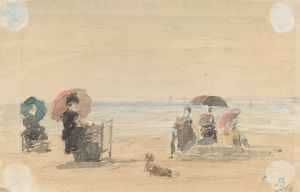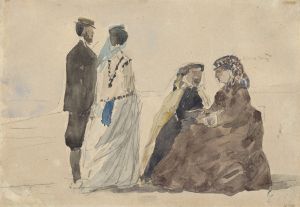
Trouville, La Nourrice
A hand-painted replica of Eugène Boudin’s masterpiece Trouville, La Nourrice, meticulously crafted by professional artists to capture the true essence of the original. Each piece is created with museum-quality canvas and rare mineral pigments, carefully painted by experienced artists with delicate brushstrokes and rich, layered colors to perfectly recreate the texture of the original artwork. Unlike machine-printed reproductions, this hand-painted version brings the painting to life, infused with the artist’s emotions and skill in every stroke. Whether for personal collection or home decoration, it instantly elevates the artistic atmosphere of any space.
Eugène Boudin (1824–1898) was a French painter renowned for his seascapes and beach scenes, often considered a precursor to the Impressionist movement. His works frequently depicted the coastal landscapes of Normandy, capturing the interplay of light, sky, and water with remarkable sensitivity. Among his many paintings, Trouville, La Nourrice is one of his notable works.
Trouville, La Nourrice (translated as "Trouville, The Nursemaid") is an oil painting that reflects Boudin's fascination with the seaside town of Trouville-sur-Mer, located in Normandy, France. Trouville was a popular destination for the French bourgeoisie during the 19th century, and Boudin often painted its beaches, populated with vacationers, fishermen, and locals. This particular painting portrays a nursemaid, a common figure in 19th-century society, likely caring for a child amidst the coastal scenery.
The painting exemplifies Boudin's mastery of capturing atmospheric effects, particularly the changing skies and the soft, diffused light characteristic of Normandy's coastline. His use of loose brushstrokes and attention to natural light prefigures the techniques later adopted by Impressionist painters, including Claude Monet, who was influenced by Boudin's work.
Boudin's choice of subject matter in Trouville, La Nourrice aligns with his broader artistic focus on everyday life and the leisure activities of the middle and upper classes. The painting is part of a larger body of work in which he documented the social and cultural dynamics of his time, often set against the backdrop of the sea.
The exact date of creation for Trouville, La Nourrice is not definitively recorded, but it is consistent with Boudin's active period in the mid-to-late 19th century. The painting is held in a private collection or museum, though detailed information about its current location is not readily available.
As with many of Boudin's works, Trouville, La Nourrice demonstrates his ability to blend realism with a poetic sensibility, offering viewers a glimpse into the charm and tranquility of coastal life in 19th-century France.





